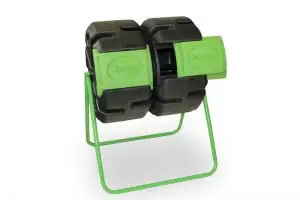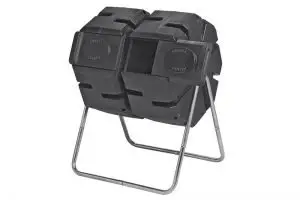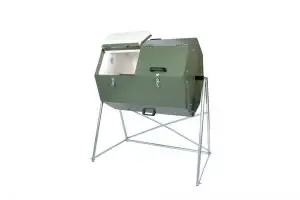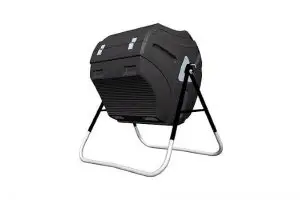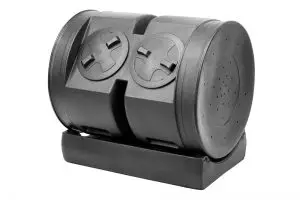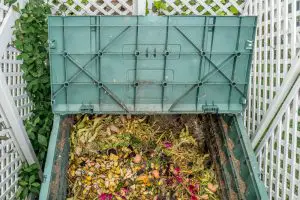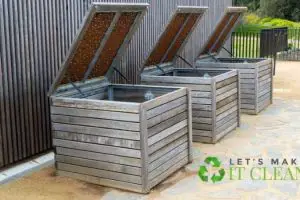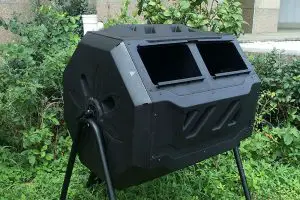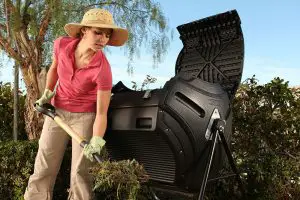A composting toilet recycles human waste through the natural decomposition process and evaporation. The waste material that enters the composting toilets is about 90% water.
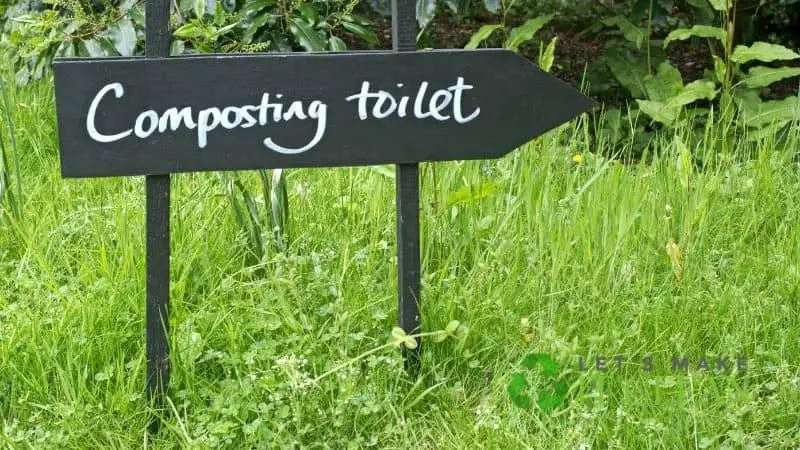
The liquid waste evaporates, taking it back to the atmosphere by utilizing the vent system. With the moisture content at an optimum level, you will not get any foul odor from the compost pile.
Quick Navigation
You have just bought a brand new composting toilet to replace the flush toilet but have no idea how it works. You have been moving from article to article, searching for the right information to help you start composting.
The problem is that every article you read has very little relevant information. Well, your search is over. This article explains to you what a composting toilet is and how it works.
What Is a Composting Toilet?
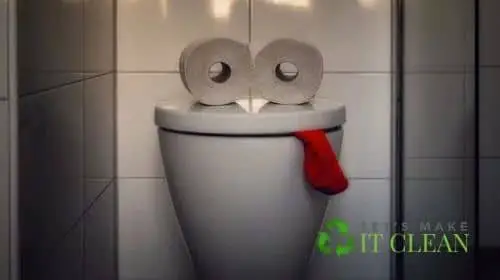
When you want to turn solid human waste into compost, the composting toilets will create an environment with plenty of oxygen microbial activity. The bacteria that work best in an aerobic environment will break down the waste pile giving you high-quality finished compost.
There are two types of composting toilets. The first is the self-contained composting toilets, while the second is the central or remote composting toilets.
A self-contained composting toilet has a full composting system with a composting chamber positioned under the toilet bowl. Tiny homes, boats, and RV mostly use these self-contained composting toilets.
Central or remote compost toilets, on the other hand, direct compost material to a central composter. The composter is positioned in a different location, such as the basement or outdoors. Where the remote composter is located depends on the amount of indoor space you have and the weather.
For people who do community composting, large central composting systems work best. This is because people can connect multiple toilets from different homes reducing the composting toilet cost.
How Does a Composting Toilet Work?
A composting toilet utilizes the natural decomposition process coupled with evaporation to turn human waste into a safe fertilizer in the soil. It will help if you provide a heating element to ease the evaporation process.
The vent system in these composting systems helps take the water back to the atmosphere. The solid material remaining in the composting chamber is then recycled into fertilizer through organic matter’s natural decomposition.
The composting process in these toilets is similar to that of the compost bins, compost tumblers, and vermicomposters. The difference is that you will be working with human feces.
To compost safely without any foul odor, you need to balance oxygen levels, heat, moisture content, and the amount of organic material you’re composting.
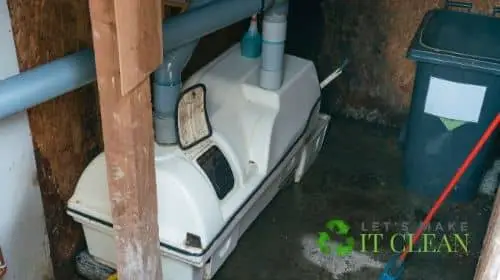
The aerobic bacteria will thrive in an environment that has a balance of these elements. Consequently, they will break down the organic matter faster, giving you finished compost in the least amount of time possible. The waste material will be completely decomposed in an odorless environment.
For moisture levels to remain optimum, the plumbing systems need to cater for urine diversion. It would be best to have a urine-diverting composting toilet.
Sufficient composting of human excrement gives you an end product free of disease-causing pathogens and viruses. This is because the aerobic bacteria will break harmful organisms in the decomposition process.
You are free to use nutrient-rich compost on plants and around the base of your garden trees. There isn’t a need to buy fertilizer whenever you compost the human excrement.
Your composting toilet performs three processes before you get finished compost:
- It evaporates the liquid waste.
- Also, it composts solid waste, including toilet paper, without bad smells.
- And, it ensures your finished compost is safe to handle.
Different manufacturers have been producing composting toilets. Sun-Mar so far has come up with the Bio-drum, which has a finishing drawer underneath.
Sun-Mar realized that to compost safely you will need to have three separate chambers. These chambers are the composting chamber, the evaporation chamber, and the finishing drawer. In the finishing drawer, you get finished compost without it being contaminated by fresh waste.
The Sun-Mar Bio-Drum
Moisture, sufficient oxygen, heat, and organic carbon material are required in a composting environment. The Sun-Mar bio-drum creates this environment conveniently for simplified composting.
The benefit of using Sun Mar bio drum composting toilet systems is, it ensures that the aerobic microbes thrive. In return, the microorganisms work faster, hastening the breaking down of human excrement and carbon material to give you finished compost.
Sun-Mar bio-drums, therefore, become beneficial in efficient composting.
Reasons to Consider a Composting Toilet
1. Produces Compost in an Odorless Environment
The idea of composting toilets may put you off since you may be afraid of getting a stench. The good news is, these toilets utilize an aerated environment that ensures adequate decomposition of waste material.
Foul odors won’t be produced if you properly maintain the composter.
The tank has air channels responsible for controlling airflow. With sufficient airflow, the composting process accelerates without you having to worry about overfilling it.
2. Enhance the Growth of Non-edible Plants
When you compost and use humanure in the soil you grow non-edible plants in, you will reap tremendous benefits. The plants use the nutrients they get from the compost to grow faster and more robust.
Root systems grow stronger as they get nutrients efficiently supporting your plants such that even strong winds will not affect the plants. When applied on a lawn, it grows greener creating an attractive environment to look at.
Gardeners now realize the benefits of composting human excrement and mulching plants, creating more beneficial gardens. If you grow commercial flowers, the human compost is at your disposal. Utilize it to enrich your soils with vital nutrients for your flowers to grow at a rapid rate.
Once you bury the fertilizer in your soil and other organic material such as food scraps and vegetable waste, you recycle organic matter in the environment that benefits both plants and the environment itself.
3. Requires Little Water
For gardeners who live in areas prone to drought, this is the compost system you need. The composting system will serve you best since it does not require much water use.
Instead, you are required to divert urine away from the compost pile in the toilets to prevent it from getting excessively wet.
A phoenix composting toilet will work the best in these areas with little water. Save the little drinking water in these regions to conserve the environment.
4. The System Has a Wide Range of Benefits
Even though the toilets need maintenance, you will reap great benefits from them. The cost-benefit element of this composting saves you money.
The maintenance of this compost toilet demands adding humus material, turning the handles of the mechanical version of the composter, and checking the material’s moisture level.
You recycle waste that pollutes the environment and conserve water at the same time. Once the waste has been composted, your plants and soil benefits from the nutrients, and you don’t have to buy fertilizers for your gardens.
5. Their Compost Is Eco-friendly
Since you will not need to add moisture content to your pile continually, this form of composting conserves the environment. Cold composting is also possible with these toilets.
The process also reduces the community’s load since you will be treating waste on-site. Other systems build and maintain a vast sewage system that requires lots of water to send the solid waste materials from homes to a waste treatment plant.
Fossil fuels are used in rival systems that are not eco-friendly.
6. Low Power Consumption
The composting toilet system needs little power to function. If you have a solar system in your home, you are in an advantaged position since this power is all you need to run the fans.
The solar panels get heat energy from the sun, saving you the money you would have used to settle the electrical bill.
How Do You Clean a Composting Toilet?
To keep your composting toilet clean, you must do the following:
Prepare The Coco Coir
Materials for use in the compost toilet are numerous, but coco coir stands out. The advantage of using coco coir is that you can quickly get it on online market platforms. It is also 100% sustainable and biodegrades efficiently to give you quality compost.
If you are not operating under a tight budget and have enough storage room, buy it in a big brick and cut the brick into pieces that will be easier to store and use.
When you are cleaning your toilet, remove the coco coir from storage. Break all the material up in a spare tote and add a small amount of clean water.
The next step is breaking all clumps up using your hands. The result will be an entirely loose and airy media.
It would help if you were patient since this step takes quite a while. To completely break all the material up with your hands, you need at least thirty minutes.
Empty The Solid Waste
Put on a dust mask and latex or protective gloves for your safety when handling the composting toilet. Now remove the toilet from the house or RV. Empty all the contents of the toilet into a compostable plastic bag.
The benefit of using a compostable bag is that they break down faster in a landfill compared to regular bags, which generally take a couple of years to break down.
For most gardeners, this is the most disturbing step. They think of how they will handle human feces and clean the toilet.
The truth about emptying this waste is that if you use a urine-diverting toilet, the solid and liquid waste stay separate. There will be no nasty smells from the pile.
Instead, the little smell you will get is like that of the soil from your vegetable garden.
Additionally, since you use coco coir, the pile will look like dusty clumps covered in the coco coir. The next step is to tie it up and place it in a trash can.
Clean With Soap and Water
It is not advisable to use cleaning chemicals. Since you are composting, it is better to avoid chemicals. If you clean the toilet using chemicals, it will begin to smell once you start using it again.
The best practice is to buy a block of environmentally friendly dish soap. Now use the soap sparingly as you clean your toilet.
Get a toilet brush with a wire head. Make sure you can bend it into a couple of different shapes as you clean to hit every stop, including those that are difficult to reach.
Make a soap mixture and use it to scrub out the urine bottle and the poop section of your toilet. The upper part of the toilet seat should also be clean.
Now put the toilet in an area with direct sunlight contact for it to dry. Avoid pouring the water used to clean the toilet in a drain pit near vegetables.
Add the Cocoa Coir
Once you have cleaned and rinsed the composting toilet, use paper towels to dry the toilet’s interior. Now retrieve your coco coir and dump it in the bottom section of your toilet.
Afterward, carry your toilet back to the house or RV. Ensure you firmly screw it back into the floor.
Install a New Rubber Seal
The final step in the cleaning process is to remove the rubber seal. This seal usually seals the lower and upper sections of your toilet, preventing any smells from leaking into your living space.
Dispose of the old seal and install a new one. Ensure that you install the new seal only after drying the bowl section of the toilet.
Inspect the toilet fan. If the fan is dirty, clean and dry it. The fan blades can be brushed off, then wash the mesh screens used for stopping the entry of insects and flies into your toilet bowl.
Do You Have to Empty a Composting Toilet?
The answer is yes. You must ensure that you empty the toilet once it fills up to make room for fresh content. The advantage is that the composting system is neither smelly nor messy.
The liquid waste and solid waste are collected separately, eliminating a wet mixture that smells.
Conclusion
Composting toilets are easy to use when making fertilizer. The advantages are numerous since you conserve the environment as you recycle waste and enrich your soils.
Use the information in this article to begin composting human excrement.

